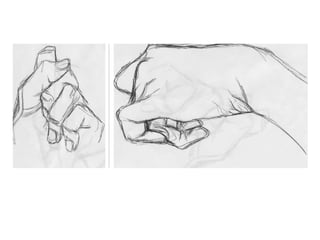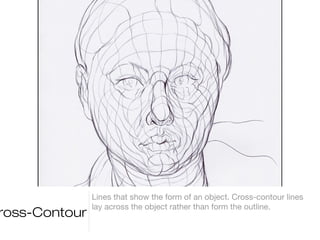Introduction to Drawing
- 1. Introduction to Drawing Exploring Different Types of Drawing
- 2. LINE SHAPE VALUE Elements of Art used most frequently in Drawing
- 3. Drawing Exercise where you only look at the object Blind Contour you are drawing, not at the paper you are drawing on. Helps to train the hand to draw what the eye sees.
- 5. Drawing exercise where you spend 90% of your time Modified looking at the object and only glancing at your drawing Contour paper 10% of the the drawing time.
- 7. Lines that show the form of an object. Cross-contour lines lay across the object rather than form the outline. ross-Contour
- 9. Igor Stravinsky. Pablo Picasso. An informed line drawing. It can encompass all forms of Contour contour drawing like blind and modified. The quality of the Drawing line is most important in this type of drawing.
- 10. War and Peace (Poster Series). Pablo Picasso. Henri Matisse.
- 11. Quick drawing that shows movement or the mass of an object. It is made through quick sketches and reflects the Gesture thinking of the artist.
- 13. Leonardo da Vinci. Using light and dark values to give the sense of form to Value to two-dimensional drawings. Model Form
- 14. Courbet. Rembrandt. M. C. Escher.
- 15. Perspective Terms Perspective - The illusion of depth or distance on a two- dimensional surface
- 16. Linear Perspective- Using a logical, scientific approach to create convincing effects of space and depth (the word linear means using lines) Vanishing Point- The point where you can see no further in a linear perspective drawing or the point where lines converge to create depth in linear perspective. Horizon Line or Eye Level Line- Always at eye level, where the sky meets the ground (conveys the point of view), not always shown in drawing.
- 17. Geometric Forms



















